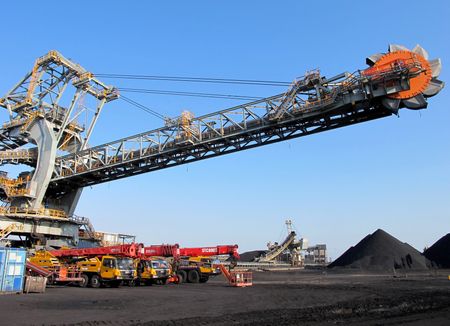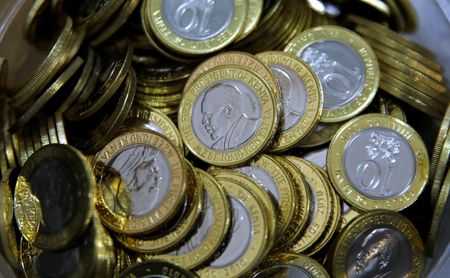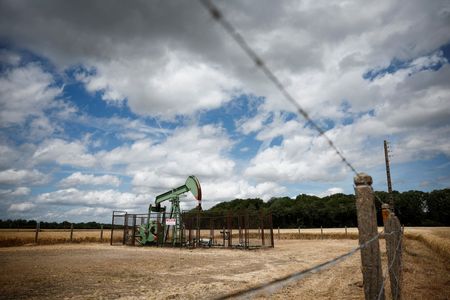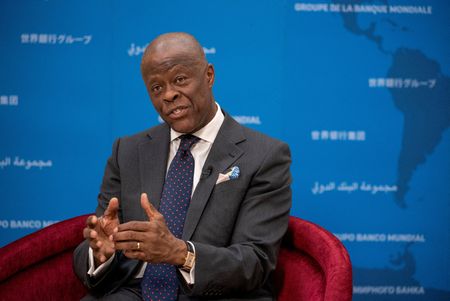By Georgina McCartney
HOUSTON (Reuters) -Oil prices settled slightly higher on Friday but posted a weekly decline, ending four straight weeks of gains, after U.S. President Donald Trump announced sweeping plans to boost domestic production while demanding that OPEC move to lower crude prices.
Brent crude futures settled up 21 cents, or 0.27%, to $78.50 a barrel. U.S. West Texas Intermediate crude (WTI) settled up 4 cents, or 0.05%, to $74.66.
Brent has lost 2.8% this week while WTI was down 4.1%.
Trump on Friday reiterated his call for the Organization of the Petroleum Exporting Countries to cut oil prices to hurt oil-rich Russia’s finances and help bring an end to the war in Ukraine.
“One way to stop it quickly is for OPEC to stop making so much money and drop the price of oil … that war will stop right away,” Trump said as he landed in North Carolina to view storm damage.
The threat of harsh U.S. sanctions on Russia and Iran, which are key oil producers, could undermine Trump’s goal of lowering energy costs, StoneX analyst Alex Hodes said in a note on Friday.
“Trump knows this and has leaned on OPEC to cover the void that these will create,” Hodes said.
On Thursday, Trump told the World Economic Forum he would demand that OPEC and its de facto leader, Saudi Arabia, bring down crude prices.
OPEC+, which includes Russia, has yet to react, with delegates from the group pointing to a plan already in place to start raising oil output from April.
“I don’t really expect OPEC will change policy unless there is a change in fundamentals,” UBS commodities analyst Giovanni Staunovo said. “Markets will be relatively muted until we get more clarity on sanctions policy and tariffs.”
TARIFFS
Chevron said on Friday it had started production at a $48 billion expansion of the giant Tengiz oilfield, which will bring its output to around 1% of global crude supply, and could further pressure OPEC’s efforts in the last few years to limit production.
Trump declared a national energy emergency on Monday, rolling back environmental restrictions on energy infrastructure as part of his plans to maximize domestic oil and gas production.
These rollbacks could support oil demand but have the potential to exacerbate oversupply, said Nikos Tzabouras, senior market specialist at trading platform Tradu.
Trump’s policies so far have largely followed predictions on the supply side, including cutting red tape to promote domestic supply growth, according to StoneX’s Hodes. However “the lower hanging fruit for growth has already been picked.”
The U.S. president vowed on Wednesday to hit the European Union with tariffs and impose 25% tariffs on Canada and Mexico. He also said his administration was considering a 10% punitive duty on China.
As attention shifts to a possible February timeline for new tariffs, caution is likely to persist in the market, given potential negative implications for global growth and oil demand prospects, said Yeap Jun Rong, a market strategist at IG. Traders expect oil prices to range between $76.50 and $78 a barrel, he added.
While bullish catalysts such as a significant drawdown in U.S. crude stocks are providing temporary positive swings, an over-supplied global market and projections of ailing Chinese demand continue to weigh on crude futures, said Priyanka Sachdeva, senior market analyst at brokerage Phillip Nova.
U.S. crude inventories last week hit their lowest level since March 2022, the U.S. Energy Information Administration said. [EIA/S]
(Reporting by Georgina McCartney in Houston, Nandita Bose in Asheville, North Carolina, Anna Hirtenstein; additional reporting by Laila Kearney, Gabrielle Ng and Paul Carsten; Editing by David Goodman, Louise Heavens, David Evans, Paul Simao and David Gregorio)









